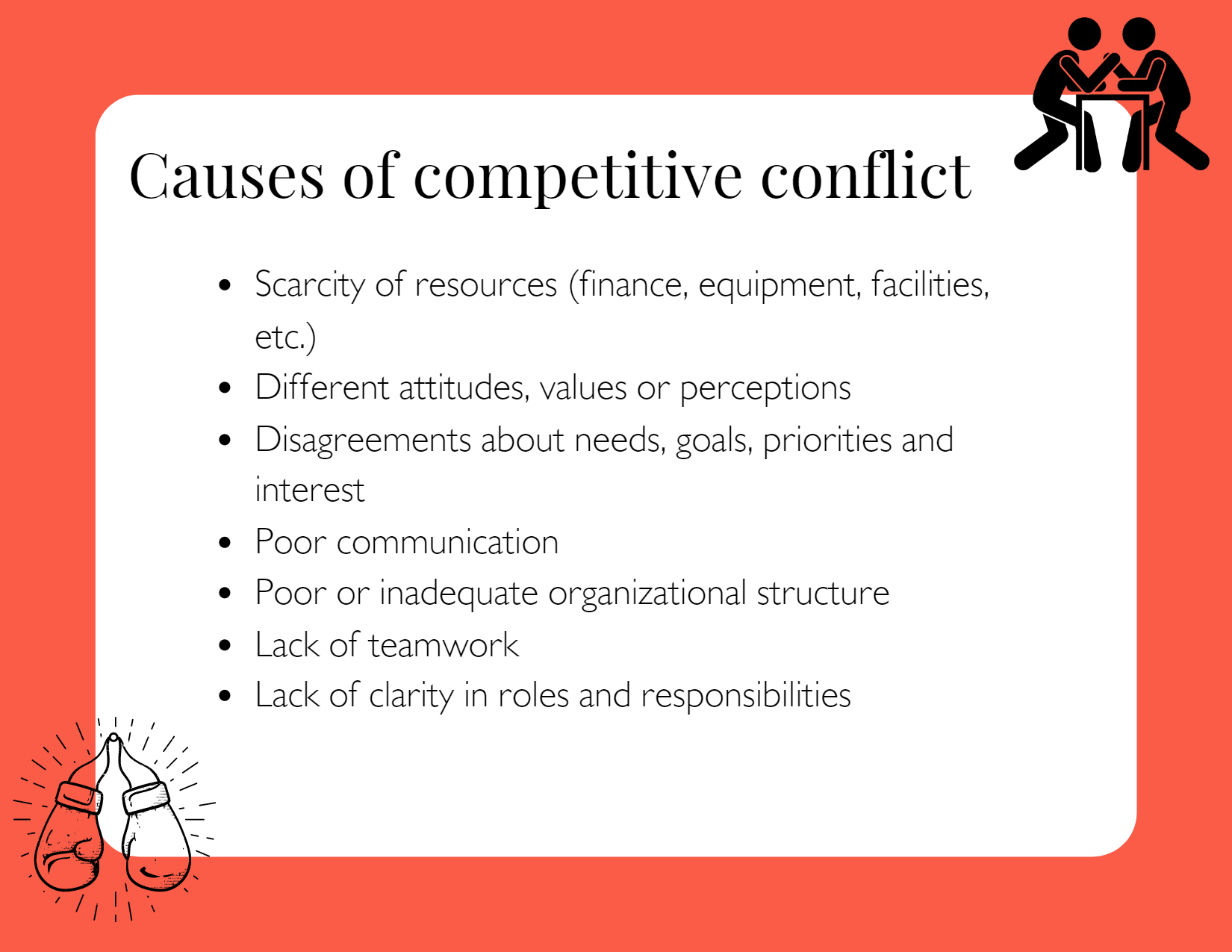“Competition” usually brings out the best in people, as they strive to be top in their field, whether in sport, community affairs, politics or work. In fact, fair and friendly competition often leads to new sporting achievements, scientific inventions or outstanding effort in solving a community problem. When competition becomes unfriendly or bitter, though, conflict can begin – and this can bring out the worst in people.
Causes or sources of competitive conflict can be many and varied. The most common causes are the following:

People have different styles of communication, ambitions, political or religious views and different cultural backgrounds. In our diverse society, the possibility of these differences leading to conflict between individuals is always there and we must be alert to preventing and resolving situations where conflict arises.
Whenever people form groups, they tend to emphasise the things that make their group “better than” or “different from” other groups. This happens in the fields of sport, culture religion and the workplace and can sometimes change from healthy competition to destructive conflict.
Even within one organisation or team, conflict can arise from the individual differences or ambitions mentioned earlier: or from rivalry between sub-groups or factions. All leaders and members of the organisation need to be alert to group dynamics that can spill over into conflict.
Click here to view and download a handout that contains the attitude evaluation questionnaire. Complete the assessment and reflect on the results.